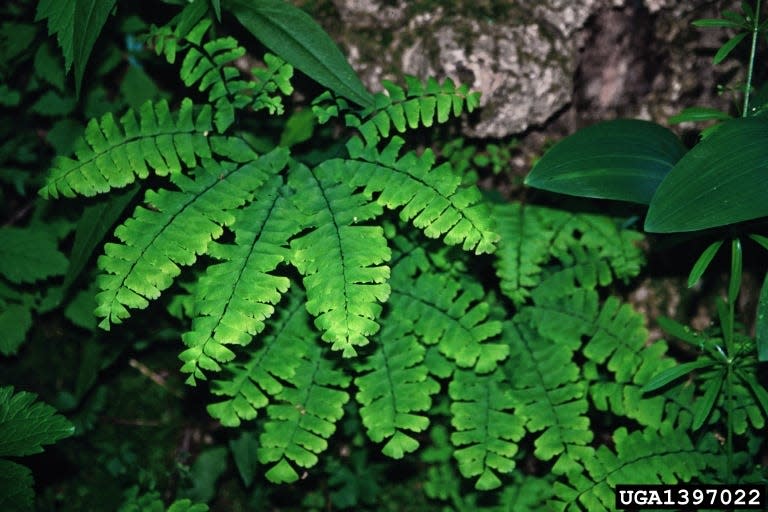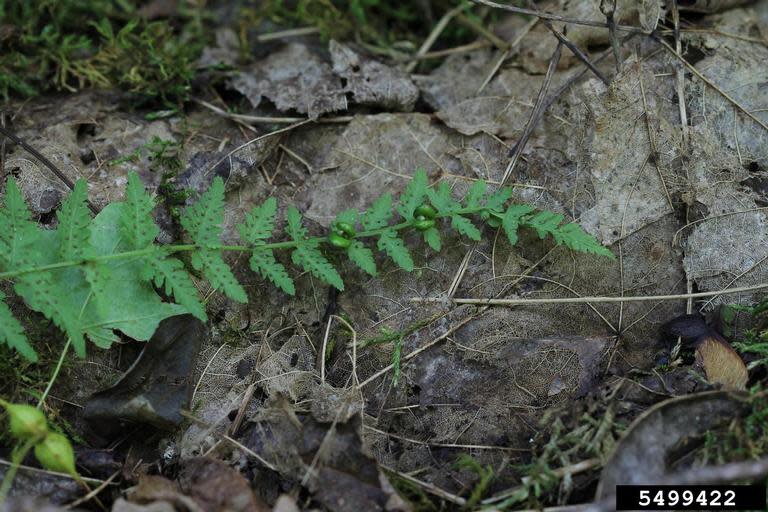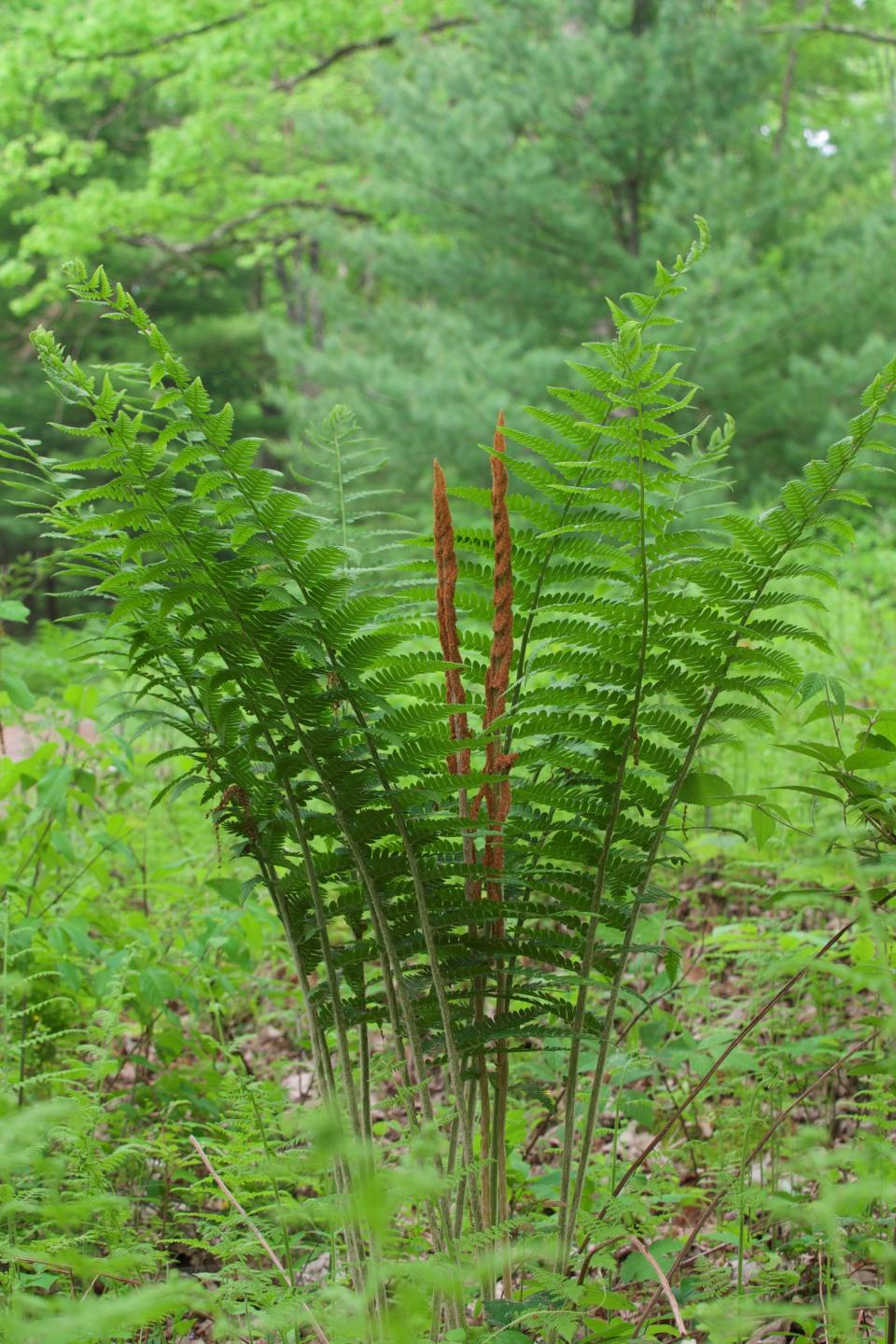Over the Garden Gate: Ferns in the garden and the ecosystem
I remember one day, while working the Master Gardener hotline, I got a call from a woman who was very upset. The beautiful floral bouquet she received from a loved one was covered in “bugs.” She was referring to the fern fronds added by the florist for greenery. She was convinced there were insects or egg sacks neatly lined up on the back of every fern leaf (called a bracket.)
She was so relieved to learn they were not bugs but actually sporangia (which hold hundreds of dust-like fern spores), and that they are completely natural and harmless. She laughed and said her new knowledge saved her from throwing the whole arrangement into the trash! It made me chuckle, but also realize how the common and widely seen fern is often very misunderstood.
Ferns are one of the oldest living plants on earth. Fossils of ferns, from 350 million years ago are easily recognizable and some are unchanged to this day. Ferns evolved and thrived in the Carboniferous Period, often referred to as “The Age of Ferns.”

Ferns have no bloom, flower or fruit. They can multiply in several ways, including by underground rhizomes, tiny bulblets that form on the tip of fronds and take root when they fall off or are pressed into the ground, or by being divided and replanted in the garden.
You may know that the most common form of fern reproduction happens by spreading tiny dust-like spores (those that my hotline client thought were bugs!) which are released and carried by the wind. However, spores are not like seeds. Their germination is a two-step sexual process: the tiny “gametophyte” generation of a fern actually releases sperm into the moist soil, which travels through the film of water around soil particles to find and fertilize an egg. Once fertilized, this “sporophyte” generation grows into the ferns we recognize and love. This process is quite complex!

Many ferns are native to Pennsylvania like the New York fern (Amauropelta noveboracensis), Hay-Scented fern (Dennstaedtia punctilobula) and Eastern Bracken fern (Pteridium aquilinum). They thrive in Pennsylvania’s abundant moist woodland settings and their delicate structures grace forests and gardens alike. They like rich humus acidic soil, and most like shady areas as well.
Fern leaves, called “fronds,” are named according to how many times the frond edge is divided, essentially, how lacy they look! Simple edges are called “uncut.” If these smaller lobes are divided again, they are called “once cut,” if they are further divided, they are called “twice cut” and even more lacy-looking fronds may be “thrice cut.” If you would like to know more about how to identify common ferns in Pennsylvania woodlands, join us for the next environmental field studies class on June 3.
Ferns aren’t only the standard, mid-height plants you see in typical home gardens, but range from 2- to 3-foot tall to even taller Cinnamon ferns (Osmunda cinnamomea) to bright green 3-plus-foot tall Ostrich ferns (Matteuccia struthiopteris), to the tallest North American-native, the Royal fern (Osmunda regalis), which grows up to 6 feet tall.

The deep glossy green of Autumn fern (Dryopteris erythrosora), which can tolerate some sun, is a nice addition to a garden. I find the delicate, shade-loving Maidenhair ferns (Adiantum pedatum) throughout the woods near my house.
Though most ferns are various shades of green, the Japanese painted fern, (Athyrium niponicum) offers stunning silver and burgundy fronds. Growing 18 inches tall, it is lovely along a pathway or in a perennial bed.
Ferns are resistant to slugs, and deer leave them alone. This makes them a useful and beautiful ground cover, especially in shady areas where it’s difficult to grow many other types of plants. However, they don’t offer useful habitat for insects, birds or mammals, and can shade out tree seedlings and spring ephemerals if too dense.
The age-old caveat of “right plant, right place” certainly applies to ferns. Used with care, their soft leafy beauty can be delightful in your garden, just remember to also add plants needed for pollinators and wildlife as well.
Ferns aren’t as simple as they might appear ― there are so many different types and they give us a glimpse into plants’ evolutionary past. We would love for you to join us for a “Ferns in the Ecosystem” walk June 3, where we will learn about many of these intricacies and practice identifying common ferns in our area. Copies of “Identifying Ferns the Easy Way” are available for participants to take home. Email Lyndsay Feather at lfeather@psu.edu for more information.
This article originally appeared on USA TODAY NETWORK: Over the Garden Gate: Learning about ferns in the garden and ecosystem

